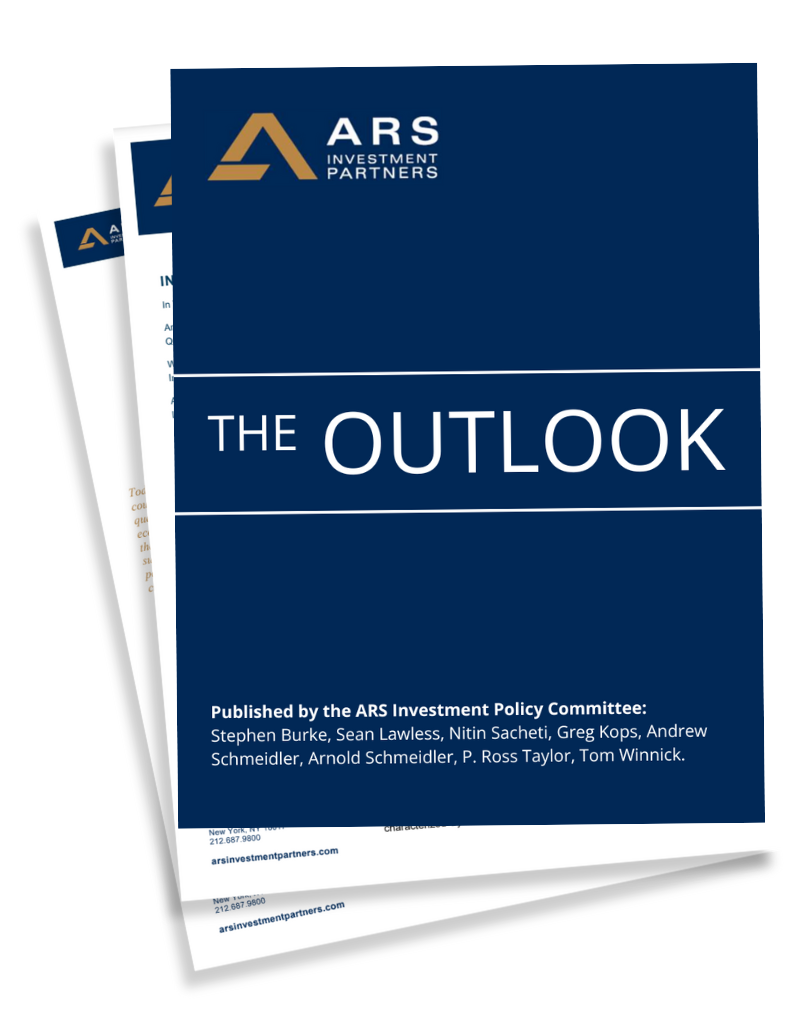Please download the slides above
What Matters Now: Today’s Turbulence Requires a Fresh Investment Approach


Please download the slides above
Navigating Through Unprecedented
Global Challenges
These are turbulent times as evidenced by significant bank failures, an attempted coup in Russia, ongoing tensions over Taiwan and trade, and the debt ceiling debacle in Washington, DC. The combination of the COVID-19 pandemic, the war in Ukraine and the resulting geopolitical, social, and economic problems along with the challenges posed by climate change and the introduction of generative artificial intelligence (AI) has created one of the most interesting and complex investment landscapes we have witnessed.

Global disruptions in commerce and economic distortions due to policy responses are reshaping investment landscapes. Highlighted in our January 12th Outlook, the significant rise in the cost of living, the realignment of the global order, and the reindustrialization of the global economy are defining key investment opportunities for the next decade.
Investments in the real economy, encompassing goods and services, are critical. This period, shaped by decarbonization, deglobalization, and remilitarization, ushers in a new era requiring strategic adaptation.
Decades of governmental investment neglect are being countered by targeted fiscal policies and unprecedented monetary resources. The Chinese government’s diminished role as a global growth driver underscores the need for investments in essential sectors like national security, technological and industrial leadership, clean energy, and healthcare technology.
The U.S. remains a prime destination for foreign capital, reacting to new legislations like the Inflation Reduction Act and the CHIPS and Science Act, which have stimulated approximately $470 billion in recent private sector capital expenditures.
The investment opportunities in the real economy, encompassing goods and services, rather than just the financial side of economic activity, are particularly noteworthy. It’s crucial for investors to avoid assuming that this period resembles past ones, as our world has significantly changed in just a few years.
The multi-decade neglect by governments in required areas of investment is being reversed by new and targeted fiscal policies. At the same time, we never had the degree of monetary resources in the system that we have today. This is a notable shift from previous periods.
One notable difference is that, unlike previous periods, this time the Chinese government cannot be counted on to drive global growth as it had in the past. We believe that investors should focus on the strategically vital economic segments that governments are targeting for required spending.
The U.S. has been, and remains, a magnet for attracting foreign capital. Although we have written about these shifts since November of 2020, they have become the reality as money from all levels of government enters the economy, and corporations react to new legislation.
The multi-decade neglect by governments in required areas of investment is being reversed by targeted fiscal policies accompanied by an unprecedented influx of monetary resources. Investors are urged to recognize the significance of these shifts, which are redefining investment paradigms. The traditional reliance on certain global economies to propel growth is diminishing, notably with the reduced role of the Chinese government as a previously dependable growth driver. Instead, a more diversified and strategically focused approach is becoming essential for capturing value in a world where economic and geopolitical landscapes are rapidly evolving.
By embracing these changes and understanding their profound implications, investors can navigate uncertainties and identify opportunities that others may overlook. This perspective is what guides our approach, aiming to ensure that our clients are not merely reacting to global changes but are steps ahead in aligning with the emerging economic order.
The information provided in this report is for informational purposes only and is not intended as investment advice, or an offer or solicitation for the purchase or sale of any financial instrument. This report is provided on the condition that it does not form a primary basis for any investment decisions. The opinions and analyses included in this report are based on current market conditions and are subject to change. ARS Investment Partners, LLC will not be responsible for any investment decisions based on this report. Please consult with a qualified financial advisor before making any investment decisions.
Sign up to receive The Outlook — our timely newsletter featuring our investment and economic thinking — and highlights from our latest market insights will be emailed directly to your inbox.
